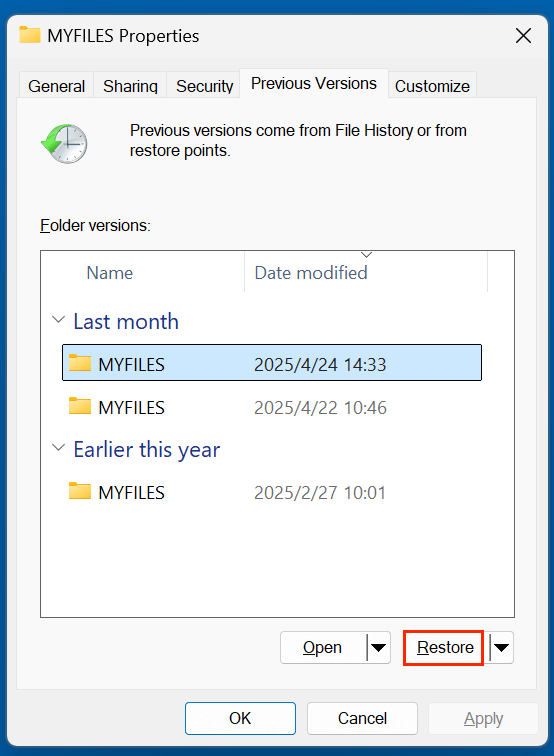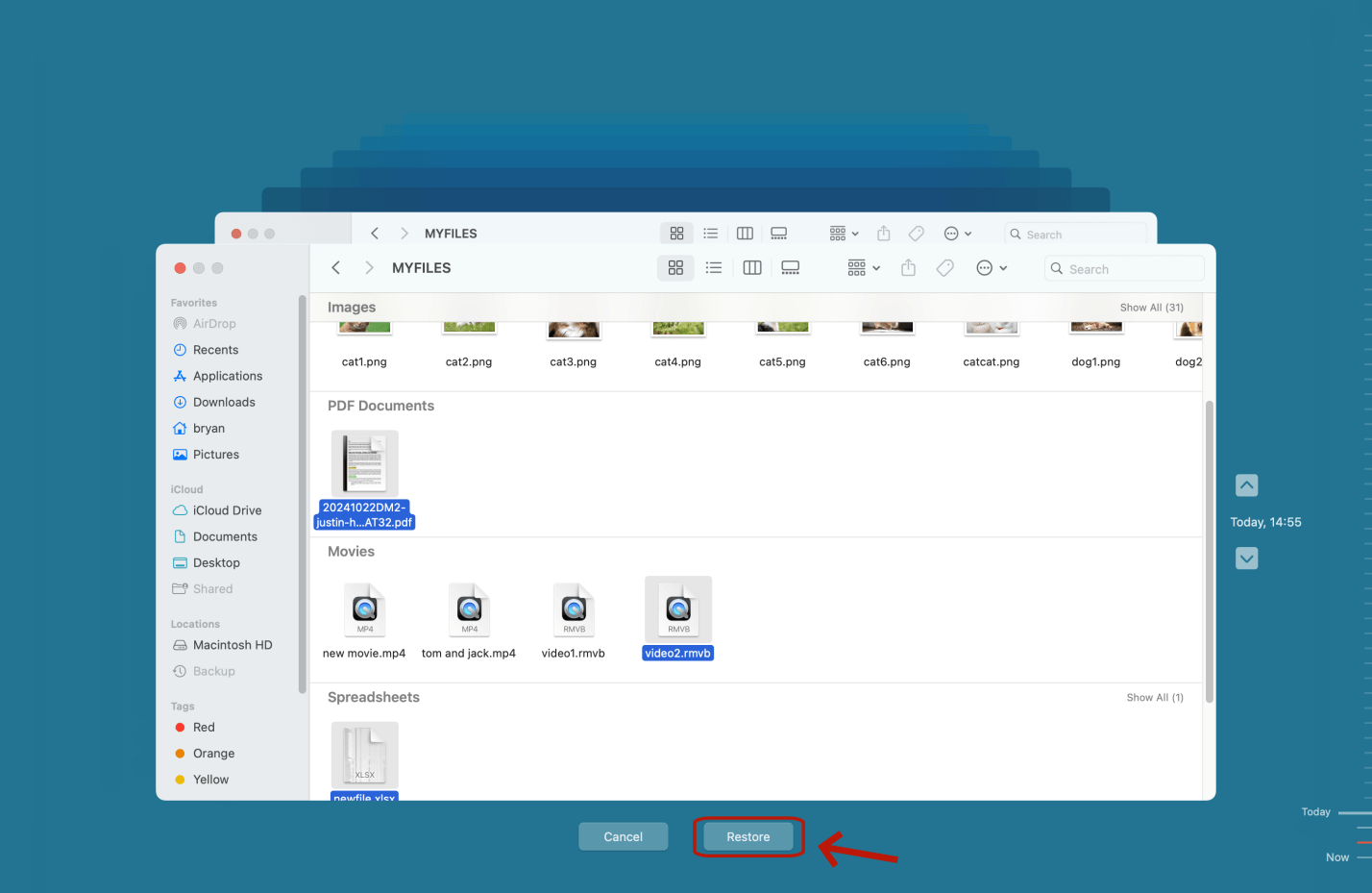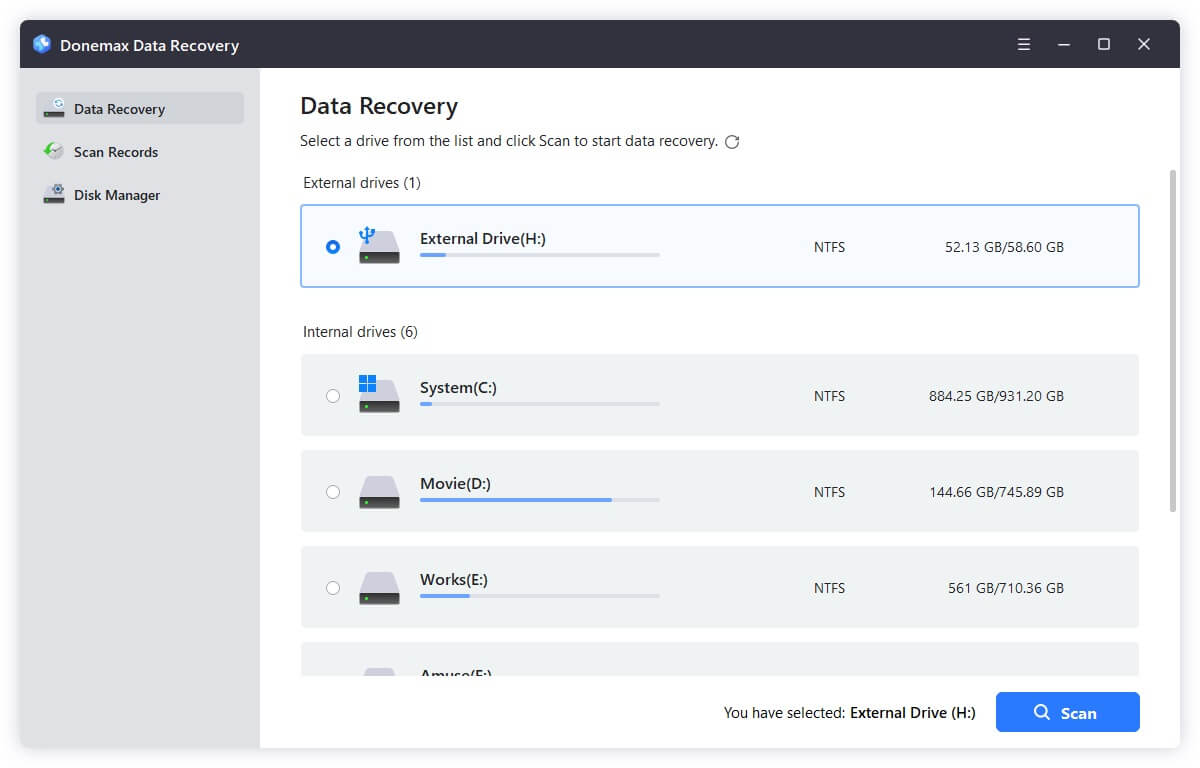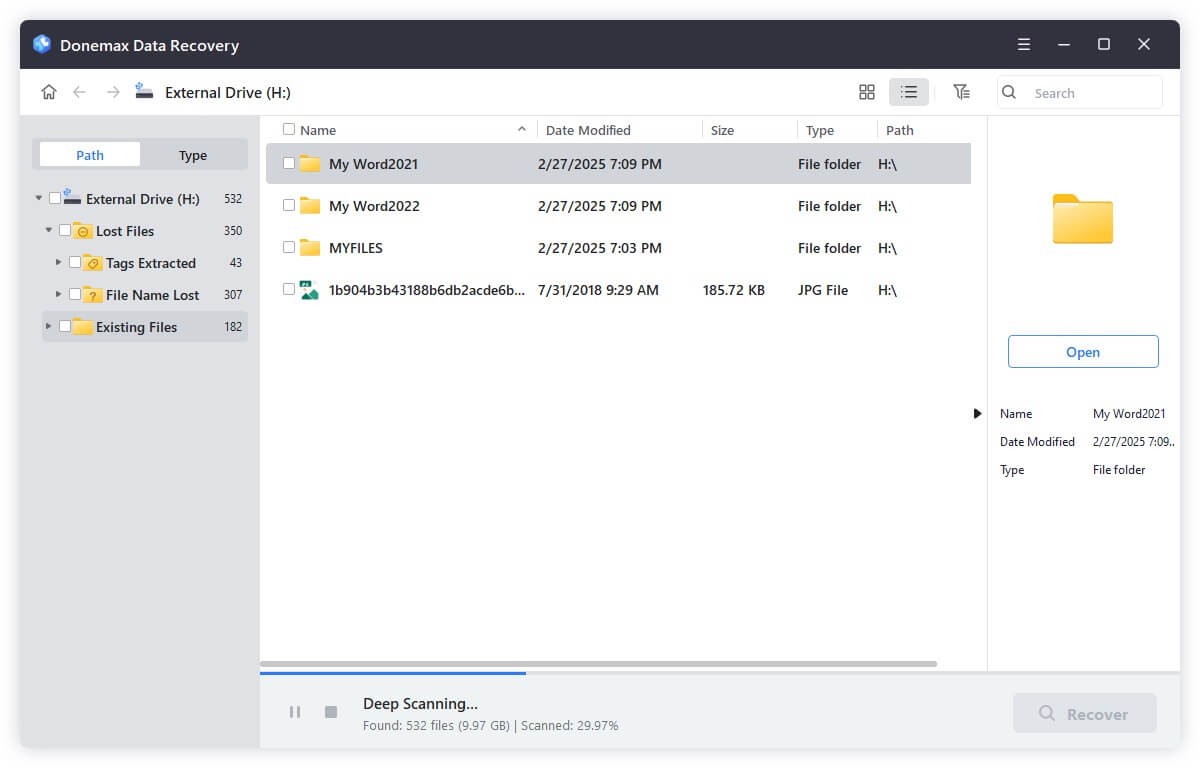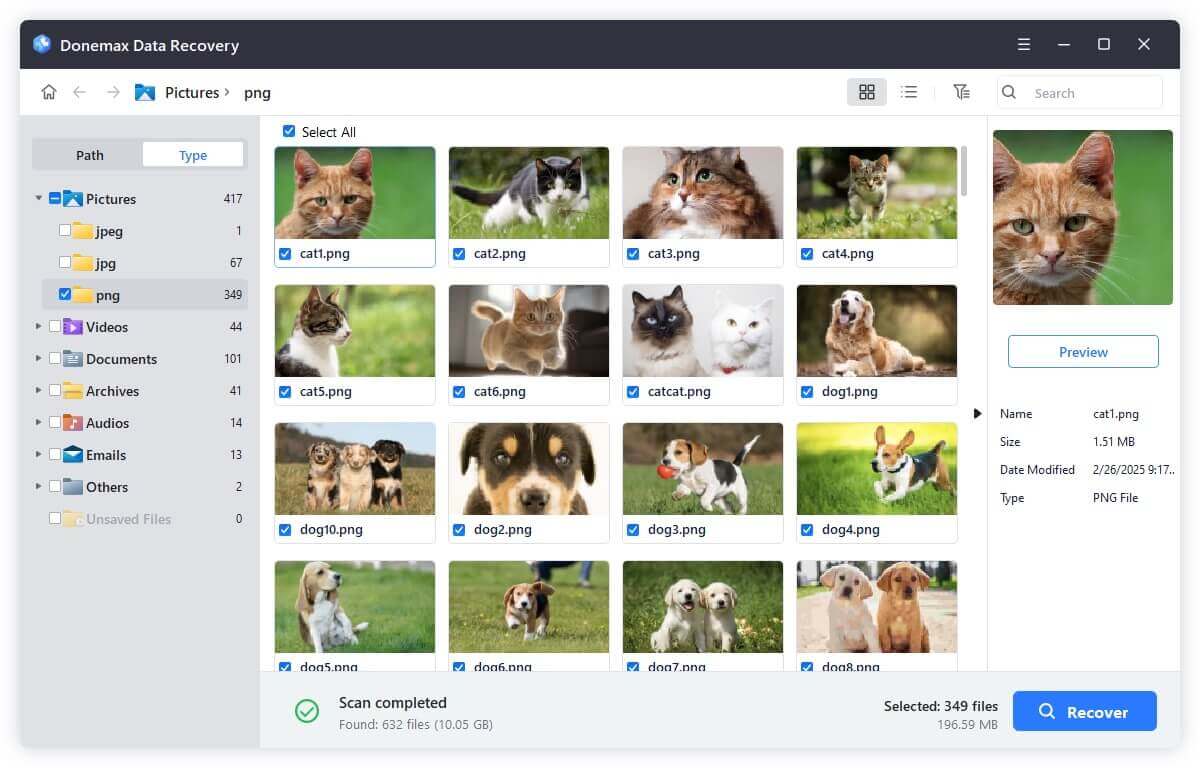Before we start: .db file is a kind of database file. If you have deleted a important .db file, emptied it from recycle bin, you still can recover it. Donemax Data Recovery offers efficient data recovery solutions. It can easily and completely recover permanently deleted .db file, and recover lost .db file from any formatted drive.
PAGE CONTENT:
In the digital world, data is the lifeblood of applications, operating systems, and services. Among the many file types that enable seamless operation, .db files are especially crucial. Whether you're a developer, a curious tech user, or someone who just accidentally deleted a critical file, understanding .db files and how to recover them can be invaluable.
This article will explain what a .db file is, the common reasons it gets deleted, and walk you through practical methods to recover your lost .db files using tools, backups, and system utilities.
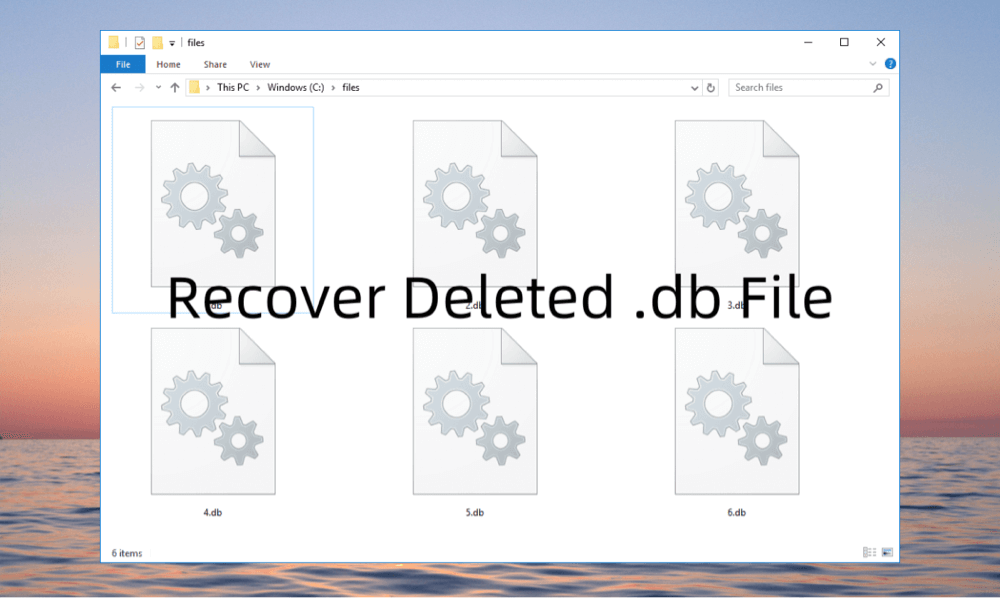
What Is a .DB File?
A .db file is a database file that stores structured data, often in the form of tables, records, and indexes. It's a general-purpose extension used by a variety of applications, operating systems, and development environments to store and manage data internally.
▪️ Common Uses of .db Files
- Mobile Applications: Apps on Android and iOS often store user data (e.g., messages, settings, cache) in .db files using the SQLite database format.
- Web Browsers: Browsers like Chrome and Firefox use .db files to store history, bookmarks, cookies, and cache.
- Windows OS: Files like thumbcache.db and Windows.edb are used to cache thumbnail previews and manage Windows Search Index.
- Messaging Platforms: WhatsApp, for instance, uses msgstore.db to store chat history.
▪️ Technical Structure
Most .db files are based on SQLite, a lightweight relational database engine embedded directly into applications. SQLite database files are self-contained, meaning all the data - including the schema and the actual content - resides in a single file.
Common Reasons for .DB File Deletion
Despite their importance, .db files can be unintentionally deleted or lost due to various reasons:
- Accidental Deletion: Users may accidentally delete .db files while clearing app data or storage.
- System Crashes: Crashes or abrupt shutdowns can corrupt or remove active database files.
- Uninstalling Applications: Removing an app without backing up its data will likely delete all associated .db files.
- Virus or Malware Attacks: Malicious software may corrupt or remove important system or app-related .db files.
- Formatting Drives: Formatting a USB, SD card, or system partition will erase all files, including .db files.
Can You Recover a Deleted .DB File?
Yes, deleted .db files can often be recovered - but it depends on several factors:
- Time Since Deletion: The sooner you attempt recovery, the better the chances.
- Storage Device: SSDs with TRIM enabled may permanently erase deleted files, while HDDs may retain them longer.
- Activity After Deletion: Writing new data to the same drive may overwrite the deleted .db files, making recovery difficult.
How to Recover Deleted .DB Files: Step-by-Step Guide
Here's how you can try to recover deleted .db files using various methods:
Method 1. Recover Deleted DB File from Recycle Bin
If the file was deleted using standard file deletion on Windows or Mac:
Windows: Open the Recycle Bin → Locate the .db file → Right-click → Restore.

Mac: Open Trash → Locate the .db file → Right-click → Put Back.

This only works if the file wasn't permanently deleted (e.g., using Shift+Delete on Windows).
Method 2. Restore Lost DB Files from File History or Time Machine
Operating systems like Windows and macOS have built-in backup systems.
On Windows (File History):
- Locate the folder containing the.db file.
- Choose Restore previous versions with a right-click.
![recover your lost .db files]()
- Click Restore after selecting a version.
![recover your lost .db files]()
On macOS (Time Machine):
- Attach the backup drive for your time machine. Choose Browse Time Machine Backups after clicking Time Machine icon on Apple menu.
![recover your lost .db files]()
- Go to the lost file's location by using Time Machine.
- The.db file can be restored from an earlier backup.
![recover your lost .db files]()
Method 3. Use Data Recovery Software to Recover Lost DB Files
If the .db file is not in the Recycle Bin or Trash, use professional recovery tools.
Why Use Data Recovery Software?
When files are deleted from your system, they are not immediately erased. Instead, the system marks the space they occupy as "available" for new data. Until that space is overwritten, recovery software can help restore the file.
Data recovery tools work by:
- Scanning for remnants of deleted files based on file signatures.
- Reading the file allocation table (FAT) or master file table (MFT) to locate "lost" data.
- Reconstructing the file even if metadata is missing.
This makes them ideal for .db file recovery, especially when the file was deleted due to formatting, system errors, or user mistakes.
Recommended Tools for DB File Recovery
| NO. | DB File Recovery Software | Features |
|---|---|---|
| 1 | Donemax Data Recovery |
|
| 2 | Recuva |
|
| 3 | Wondershare Recoverit |
|
| 4 | Magoshare Data Recovery |
|
| 5 | PhotoRec |
|
Steps:
- Install the Software: Download and install the recovery tool on a drive different from the one where the .db file was deleted.
Donemax Data Recovery is one of the best data recovery programs. It supports to recover permanently deleted and lost .db files from any hard drive.
- Scan the Drive: Select the location or drive where the .db file was stored and perform a deep scan.
![Select the Drive]()
- Filter for .db Files: Most tools allow filtering by extension - type .db to narrow results.
![Scan the Drive]()
- Preview and Recover: Select the correct .db file and click Recover. Save it to a different location to avoid overwriting data.
![Preview and Recover the lost .db Files]()
Tips for Maximizing Recovery Success
- Act Fast: The sooner you begin recovery, the better. Delay increases the chance of data being overwritten.
- Avoid Writing to the Drive: Don't install programs or copy new files to the affected drive.
- Use Deep Scan When Needed: While time-consuming, deep scanning can detect fragments missed during quick scans.
Method 4. Restore Lost .db Files from Cloud Backup
If the .db file was stored in a synced folder (e.g., OneDrive, Google Drive, Dropbox):
- Log into the cloud storage account.
- Check the Trash/Bin section for deleted files.
- Restore the deleted .db file if available.
Cloud services often retain deleted files for 15–30 days.
Method 5. Advanced: Use Command-Line Recovery Tools
If you're comfortable with advanced tools, you can use command-line utilities like:
- TestDisk (Powerful tool for partition and file recovery)
- chkdsk (Windows utility to check file system errors)
Example:
chkdsk X: /f
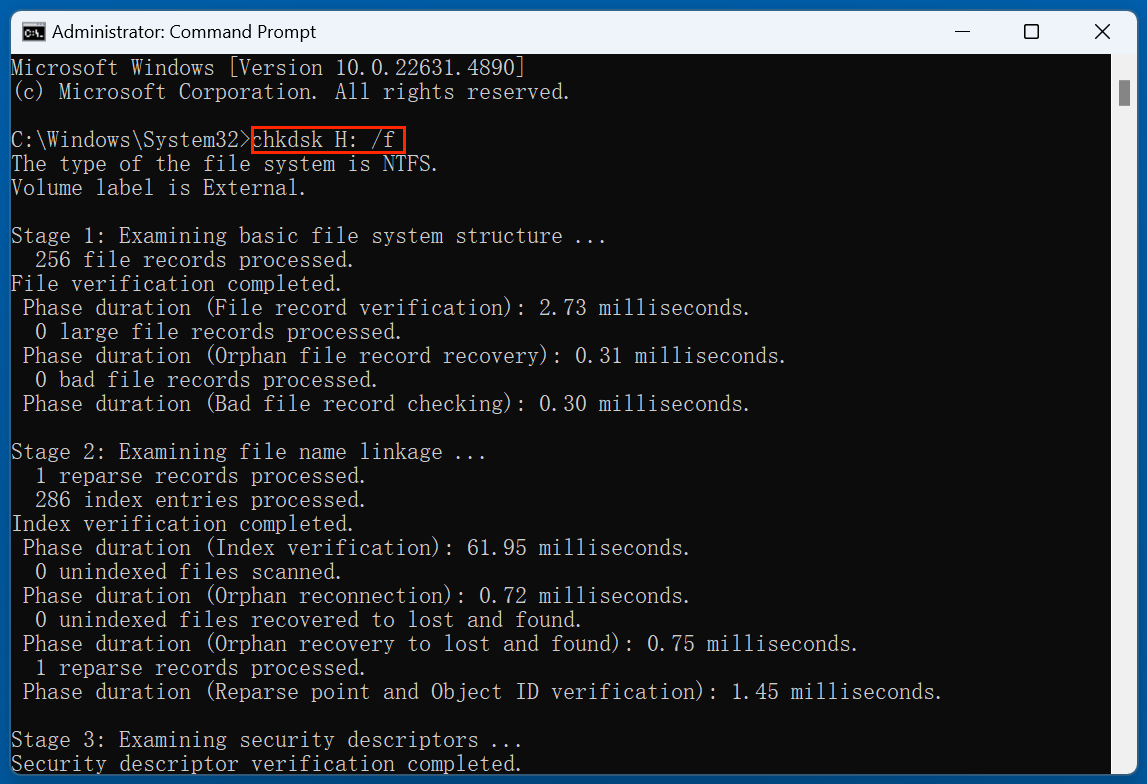
💡 Note: These tools don't recover .db files directly but may help restore file system integrity, making it possible to recover files afterward.
What If the .DB File Is Corrupted?
Sometimes .db files are not deleted, but they become corrupted and unreadable. In such cases:
1. Try Opening the File in SQLite Tools
Use software like DB Browser for SQLite to open and inspect .db files.
If the database opens partially, export the working tables and rebuild the database.
2. Repair the Database File
You can use the SQLite command line or tools like Stellar Repair for SQLite.
Command example:
sqlite3 corrupted.db ".recover" > fixed.db
3. Restore from Application Backup
Apps like WhatsApp periodically back up their .db files. Restoring the entire app and choosing a backup can recover lost .db data.
How to Prevent Future .DB File Loss?
Taking preventive steps can protect you from future data disasters:
- Backup Regularly
- Use File History (Windows), Time Machine (Mac), or third-party backup software.
- Cloud services like Google Drive or iCloud are also useful for syncing .db files.
- Enable App-Based Backups
- WhatsApp, for example, allows daily cloud backups of .db files on Google Drive or iCloud.
- Avoid Using Disk Cleaners Aggressively
- Tools like Cleaner Software may delete important .db cache or config files.
- Keep Antivirus Updated
- Prevent malicious software that might corrupt or delete .db files.
- Use Version Control
- Developers should use Git or other versioning systems to track .db file changes.
When Recovery Fails: Professional Services
If DIY recovery doesn't work and the .db file is critical, consider hiring a professional data recovery service. These experts use advanced equipment and techniques to retrieve data from damaged drives, corrupted sectors, or formatted volumes.
Some reputable services:
- Ontrack Data Recovery
- DriveSavers
- Stellar Data Recovery
Ensure that the service provider complies with data privacy regulations, especially if the .db file contains sensitive data.
Conclusion
.db files are small but powerful, holding structured data essential for applications, devices, and systems. Whether you're managing browser history, app data, or critical business records, losing these files can be disruptive.
Fortunately, there are several practical and effective ways to recover deleted .db files -from using Recycle Bin and backups to deploying recovery software and even command-line tools. The key is to act quickly and avoid overwriting the data.
Always remember to back up important files regularly and treat .db files with the care they deserve.


Donemax Data Recovery
One of the best data recovery programs to recover deleted, formatted or lost data from PC, Mac, HDD, SSD, USB drive, SD card, camera, RAID, Sever or other storage devices.
Related Articles
- Mar 12, 2025How to Recover Lost Data from Seagate Game Drive PS5 SSD?
- Jan 17, 2025How to Repair and Recover Corrupted PSD Files?
- Nov 06, 2025PhotoRec Review and Better Alternative
- Apr 11, 2025Recover Deleted Files from QNAP Drive [4 Methods]
- Apr 07, 2025Floppy Disk Recovery: A Comprehensive Guide
- May 22, 2025How to Recover Deleted 7-ZIP File (such as .7z file)?

Steven
Steven has been a senior writer & editor of Donemax software since 2020. He's a super nerd and can't imagine the life without a computer. Over 6 years of experience of writing technical solutions and software tesing, he is passionate about providing solutions and tips for Windows and Mac users.

Gerhard Chou
In order to effectively solve the problems for our customers, every article and troubleshooting solution published on our website has been strictly tested and practiced. Our editors love researching and using computers and testing software, and are willing to help computer users with their problems

